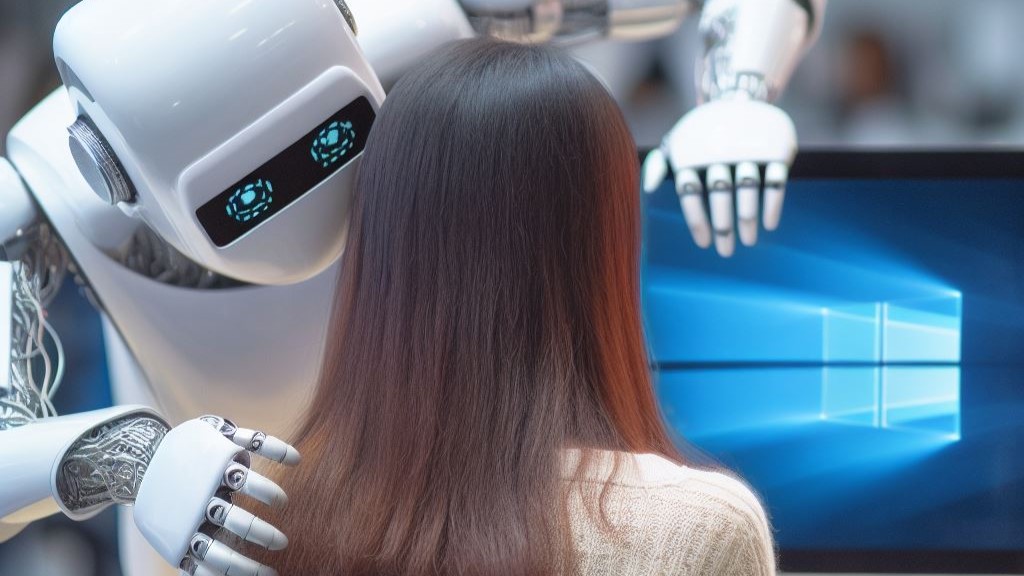Be My AI integration into Microsoft's Disability Answer Desk will help visually impaired users install a new version of Windows without any external assistance
Generative AI will help Microsoft accord visually impaired users with better customer service.

What you need to know
- Microsoft is working closely with Be My Eyes to make its Disability Answer Desk customer service department more accessible to users with visual impairments.
- Through Be My AI, users with low vision will be able to install new Windows versions without seeking assistance from anyone.
- According to Be My Eyes' analysis, only 10% of the Microsoft users leveraging the service reached out to humans for extra support.
In May, Microsoft commemorated the 12th annual Global Accessibility Awareness Day with a brand-new pilot program designed to assist those with visual impairments. The company announced that it would extend its partnership with Be My Eyes, and further highlighted its plans to inject AI capabilities into the experience with the aim of helping users establish a bit of independence from sighted assistants.
What is Be My Eyes?
For those unfamiliar with Be My Eyes, it's a mobile app that helps connect users with vision impairments to sighted assistants for visual interpretations. And now, Microsoft is further enhancing its partnership with Be My Eyes, with the aim of providing its users with a convenient and easy way to contact its customer service, according to a spot by Bloomberg.
How is Microsoft leveraging the app's capabilities?
Be My Eyes ships with an AI-powered tool dubbed Be My AI, which leverages OpenAI's GPT-4 model to provide users with a detailed description of an image. Microsoft intends to pick up this technology and use it in its Disability Answer Desk.
Microsoft joined the Virtual Volunteer Corporate Beta Test with the aim of leveraging generative AI capabilities to improve customer care service at its Disability Answer Desk. The recent announcement asserts Microsoft's commitment to enhancing accessibility for everyone. A person with low vision can now install a new version of Windows without any assistance.
According to Jenny Lay-Flurrie, Microsoft's chief accessibility officer:
"Microsoft is proud to be the first company to integrate Be My AI into our customer service with the Disability Answer Desk. The integration of Be My AI creates an innovative, fast and efficient way for disabled customers to receive assistance from Microsoft. By combining Microsoft’s expertise and the innovative solutions from Be My AI™, we are empowering independence for people with disabilities.”
Statistics prove that the AI tool is quite handy
Per Be My Eyes' analysis, only 10% of the Microsoft users leveraging the service reached out to humans for extra support. Moreover, research revealed that the Be My AI tool was able to resolve queries over a short period of time, with an average of 4 minutes. This is an incredible feat compared to the time spent making these queries via a human assistant, which averages around 12 minutes.
All the latest news, reviews, and guides for Windows and Xbox diehards.
Currently, an average of 560,000 users are using the platform. Mike Buckley, the platform's CEO, indicated that even more people are warming up and adopting the platform since the AI tool shipped to the platform. He added that the number of app users will likely double this month.
What are your thoughts on Microsoft's efforts to enhance the accessibility of its services to users with visual impairments? Let us know in the comments.

Kevin Okemwa is a seasoned tech journalist based in Nairobi, Kenya with lots of experience covering the latest trends and developments in the industry at Windows Central. With a passion for innovation and a keen eye for detail, he has written for leading publications such as OnMSFT, MakeUseOf, and Windows Report, providing insightful analysis and breaking news on everything revolving around the Microsoft ecosystem. While AFK and not busy following the ever-emerging trends in tech, you can find him exploring the world or listening to music.
